The benefits of working from home are dreamy. No need to deal with a jam-packed commute. No more awkward break room conversations with Ted from accounting. No need to even put on pants.
But in the words of Spider-Man’s wise Uncle Ben: “With great power comes great responsibility.”
Which leads us to the challenges of working from home. These can be quite a struggle, especially if you’re not used to having 100 percent accountability for your entire day (on top of all the extra personal responsibilities you have now).
You’ll likely need to figure out the best ways to keep yourself productive and focused … and sane. For some people, this means essentially relearning how to stay productive in the face of a completely new environment, structure, and routine.
In this article, we’re going to look at 11 tips that first-time work-from-homers might get the most benefit from. These tips will help you:
- Maximize your productivity and efficiency
- Minimize distractions to keep your focus
- Stay sane by managing your stress levels and mental state
Let’s make Uncle Ben proud.
Post Contents
- 1. Schedule regular breaks
- 2. Make a schedule that works for your own brain
- 3. Take a real lunch break (no skipping!)
- 4. Plan your to-do list and schedule in advance
- 5. Schedule calls wisely – they can be a total time-suck
- 6. Be mindful of your self-distracting habits
- 7. Pick out a playlist for the occasion
- 8. Try to schedule 30 minutes of self-care every day
- 9. Don’t stretch yourself too thin
- 10. Set expectations with other people in your home
- 11. Give yourself some credit!
- How to Work From Home and Not Go Crazy
- Want to Learn More?

Don’t wait for someone else to do it. Hire yourself and start calling the shots.
Get Started Free1. Schedule regular breaks
It might seem like a good idea to try and force yourself to plow through as much work as possible. But science disagrees.
You’ll actually do yourself a bigger favor if you pause throughout the day to take short breaks. These “microbreaks” can reduce your stress and give your brain a much-needed recharge.
I like to use the Pomodoro Technique to proactively schedule breaks in between periods of focus. It goes like this: 25 minutes of working, then a five minute break. Do this four times, then take a longer break, anywhere from 10 to 30 minutes. Then, keep going until the workday is over.
Try the Tomato Timer to guide you through.
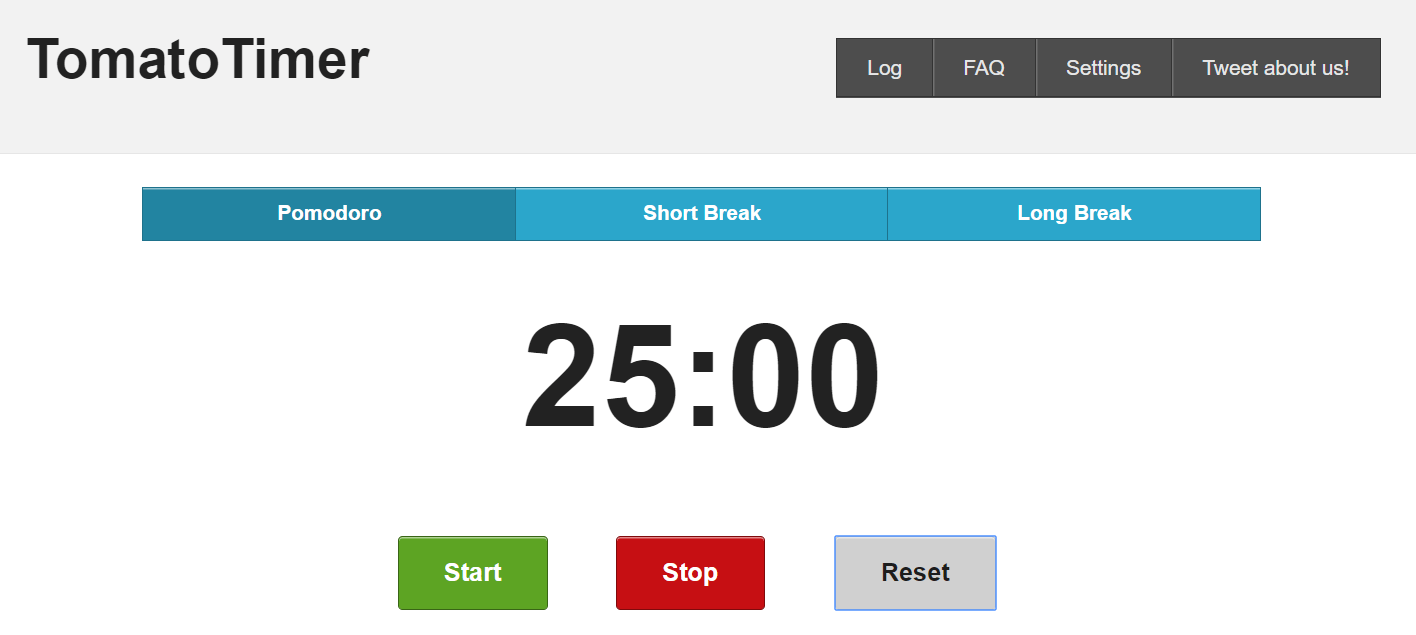
2. Make a schedule that works for your own brain
This one can be a little tricky if you’re working with a team and, therefore, work on other people’s schedules. But in terms of planning your own periods to get things done, try to plan around your most productive hours.
For example, my most productive hours are in the morning. On top of that, I’m (unfortunately) easily distracted by new emails, phone calls, and Slack messages.
One of the ways I combat this is by waking up a bit earlier on days when I have a lot to get done. This way, I can cruise through my most important priorities while soaking in the silence of the morning. Then, when everyone is ready to collaborate, I’m not desperately trying to balance my solo tasks with those collaboration tasks.
If you’re most productive later in the day, try planning in advance so you can block out that time and shut out all distractions.
3. Take a real lunch break (no skipping!)
This sort of ties into the first tip, but it deserves its own note. Taking a real lunch break is necessary for giving yourself a mental recharge, but it also makes sure you get a nutrient boost to keep your brain at peak power.
Structured meal times also address the issue that has become the punchline of many a meme: the super common phenomenon of over-snacking while you figure out your new routine.
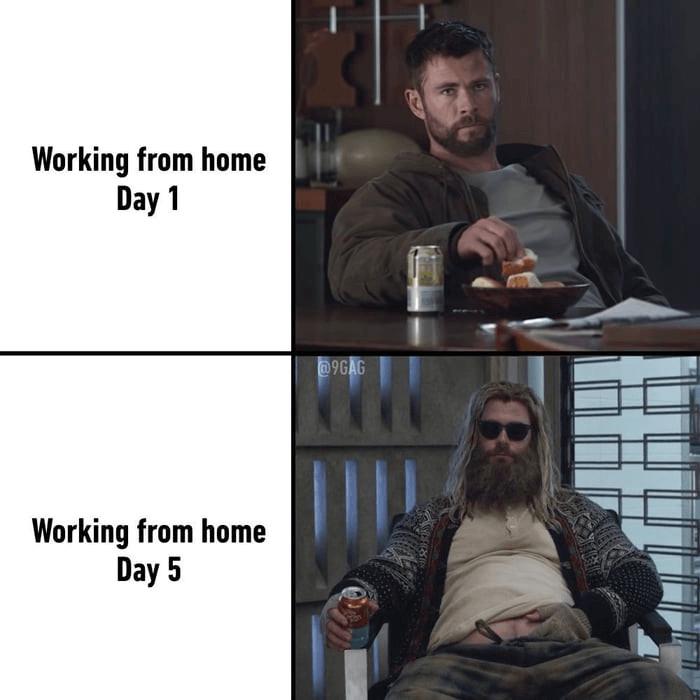
Whether your constant grazing is a form of procrastination or self-soothing from all the newfound stress, no judgments here. But taking a regular, full lunch break (and eating a full breakfast) are a great first line of defense if you feel like you’re in this boat and want to get out of it.
Plus, you can use your lunch break to take a walk outside, do some stretches, or otherwise get your mind off the day’s to-do list.
4. Plan your to-do list and schedule in advance
Learning how to work from home can be utter chaos. This applies even when you’re mostly on your own but is often amplified when you’re working with a team. New tasks and requests come up throughout day, in addition to figuring out new tools and systems for getting things done.
A great way to minimize the madness is to plan your day in advance, complete with a to-do list of specific tasks. One way to go about this is to write your next workday at the end of your current one. For example, writing Tuesday’s schedule at 5 p.m. on Monday.
This way, you can be clear about where you’re leaving off and where you need to start tomorrow. Knowing in advance gives you an extra boost of mental preparedness that can really be a life-saver as you navigate how to successfully work from home.
5. Schedule calls wisely – they can be a total time-suck
Calls can be the evil villain of your workday, especially those calls that use up 30 precious minutes of your day but somehow don’t actually accomplish anything.
If your day is swallowed by calls that distract from your to-do list, figure out how you can minimize them.
Here are some ideas for making that happen:
- Try using a messaging tool like Slack or Google Hangouts, where you and your team can ask each other questions and send quick updates without the need for a call.
- For issues that are too detailed or tedious to type out, record an audio, video, or screenshare of yourself giving the important details. Loom is a great free tool for this.
- Schedule all your calls into one or two days versus having a few calls each day. This way, you can keep a few uninterrupted days all to yourself.
The less calls, the better. We all know how virtual meetings turn out anyway.
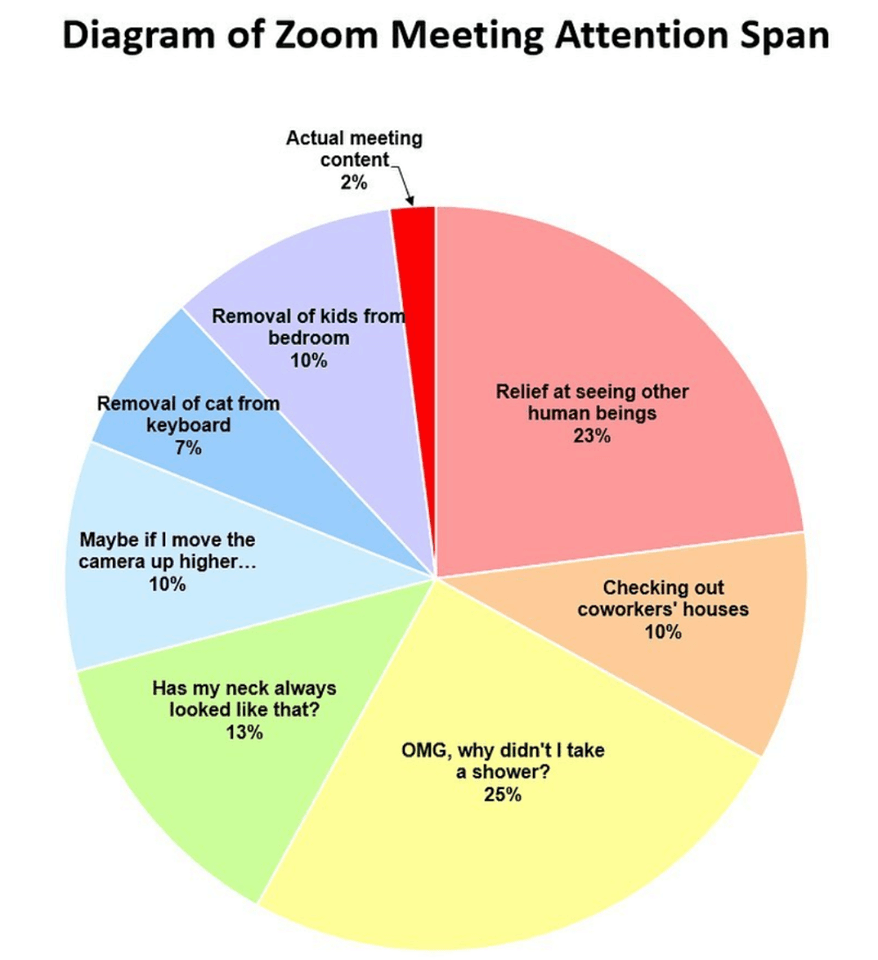
6. Be mindful of your self-distracting habits
Are you the kind of person who finds yourself scrolling Instagram 10 times a day? What about the constant food grazing we talked about earlier? Or maybe you end up planning dinner instead of planning your 3 p.m. meeting.
One of the work-from-home essentials is to minimize your self-distractions by being mindful of them. Pay attention to your own patterns, so you can work around them.
For example, if you’re a social media scroller, sign out of all your social media accounts on your computer and phone at the start of the workday. This way, when your muscle memory finds you clicking or tapping your way to each site, you’ll have an extra reminder that you’re going off course.
7. Pick out a playlist for the occasion
There’s plenty of research that shows music can help you be more productive when working from home. At the most basic level, music boosts your mood, which can keep you in the right headspace to plow through your to-do list.
But there’s also research that shows your brain has an easier time focusing when it has the right soundtrack. This is especially true for instrumental music with no lyrics, as well as familiar music that you’ve already heard before.
Try browsing YouTube or Spotify for an instrumental playlist in your favorite genre. I usually listen to trip-hop playlists like this one – it’s relaxing but has just the right tempo to keep me focused. But every now and then, I get fancy with a classical music playlist to switch things up.
8. Try to schedule 30 minutes of self-care every day
I can’t stress this enough: It’s non-negotiable for you to tend to your own needs and practice self-care regularly. If you constantly put yourself on the proverbial back burner, you’ll be burnt to a crisp in no time.
Pick the things that make you most happy, refreshed, and energized, and try to give yourself 30 minutes a day. Here are some self-care ideas:
- Move your body: Go for a walk, do some stretching or yoga, get some proper cardio or strength training, or dance to your favorite playlist.
- Read a book or watch a movie or show that you really like.
- Explore that new hobby you’ve been wanting to try out.
- Call someone you love.
- Cook or order food that makes you feel good (and don’t feel guilty if pizza and cookies are what happen to make you feel good today).
- Just lay in bed and stare at the ceiling if that’s what works for you!
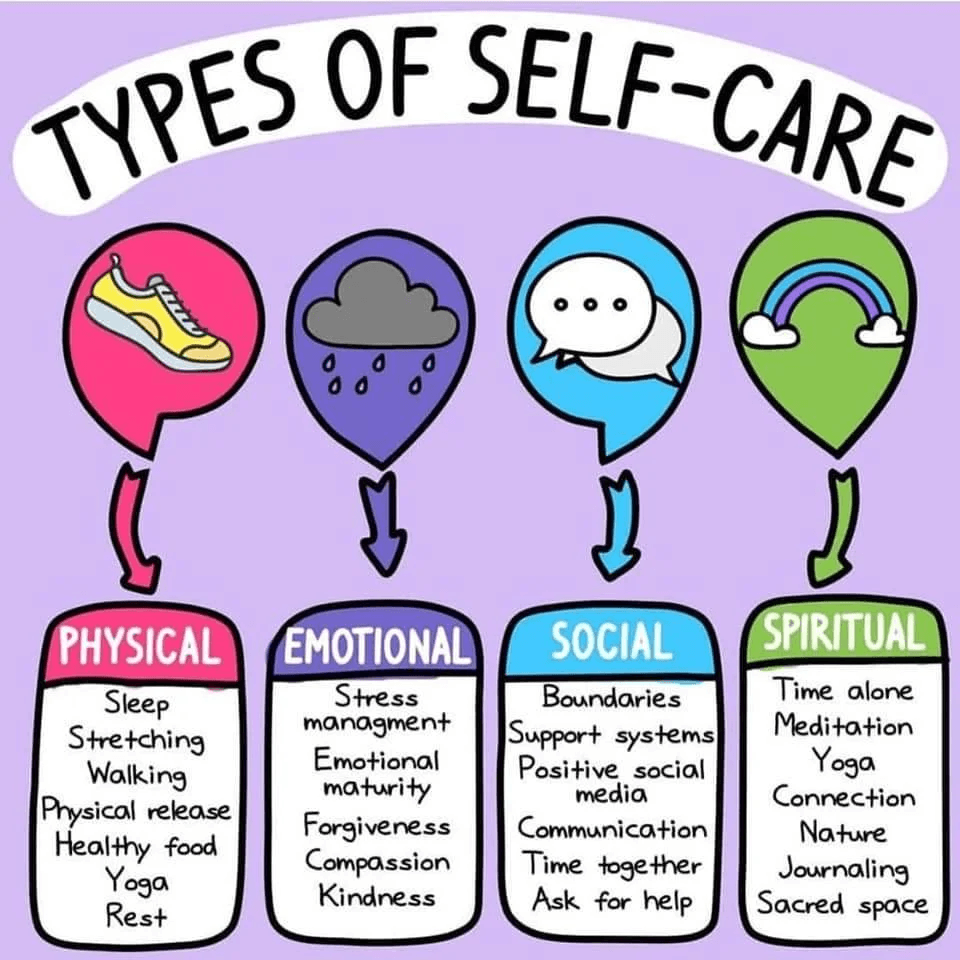
9. Don’t stretch yourself too thin
I know, I know, you want to be a people-pleaser and a good worker. But you can’t just say “yes” to everything and constantly have an overloaded plate.
To be an awesome team member or leader – while also keeping your own sanity – you need to set work and personal boundaries where needed.
This means trying not to let others veer you off course too sharply or too often. Accommodate your team when you can, but don’t make it a habit to completely throw off your own process so that you can be helpful to others.
Another part of this is asking for help when you’re feeling overwhelmed. It’s not a sign of weakness; it’s a sign of teamwork.
It might also help to set boundaries for communication. Like if you constantly get bombarded with phone calls, ask your team to send messages or emails instead, or schedule a reliable time window when you can collaborate on projects and tasks.
10. Set expectations with other people in your home
Learning how to work from home can be tough. Learning how to work from home with kids, other family members, or roommates can be even tougher.
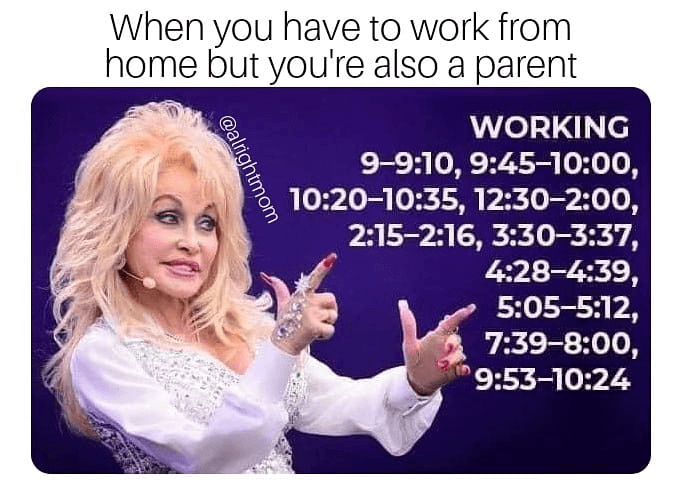
While it’s not always possible to give yourself all the peace and quiet you need for a perfectly productive day, you can bring yourself closer to the goal with some concerted effort.
For example, if you’re sharing a limited internet connection, try to work out a schedule for the most bandwidth-intensive activities like virtual meetings.
If you need to take shifts with your partner to watch the kids, see what you can plan in advance so that you can both still end your day with some meaningful concentration time.
Make sure they know what your days are looking like and what help you might need from them to make sure things go smoothly (and, of course, see how you can help them, too).
11. Give yourself some credit!
Do you sometimes feel guilty that you haven’t been productive enough or that you let others down while you were struggling to navigate your own responsibilities?
Yeah, you’re certainly not the only one.
This is a pivotal part of learning how to successfully work from home: being resilient and giving yourself some credit for all the great work you’re doing and the great effort you’re putting into it.
It’s extremely likely that you’re going to have days that feel like an absolute tornado, where it feels like you didn’t get one single thing accomplished.
But those days will inevitably balance out with the ones where you feel like a rockstar, checking off every item on your list while also being able to go out of your way to help your teammates and family members.
You’ll find that if you regularly pause to give yourself the credit you deserve, you’ll start having more of those great days and less of those nutty ones.
How to Work From Home and Not Go Crazy
At the end of the day, learning how to work from home effectively – and not lose your marbles – is a matter of trial and error. It’s a combination of knowing and learning about yourself, then working on ways to accommodate yourself in a way that keeps you comfortable, happy, and able to get all your work done.
If you’re feeling frazzled and frustrated, start small. Maybe you can add a few more five-minute breaks to your day and see if that helps you mentally recharge. Maybe you can add a walk around lunchtime to get away from your computer screen. Maybe you can cut down the number of calls you have.
Keep experimenting until you find your groove. It may feel tough at first, but you’ll get better with every new day! Uncle Ben and I believe in you.




